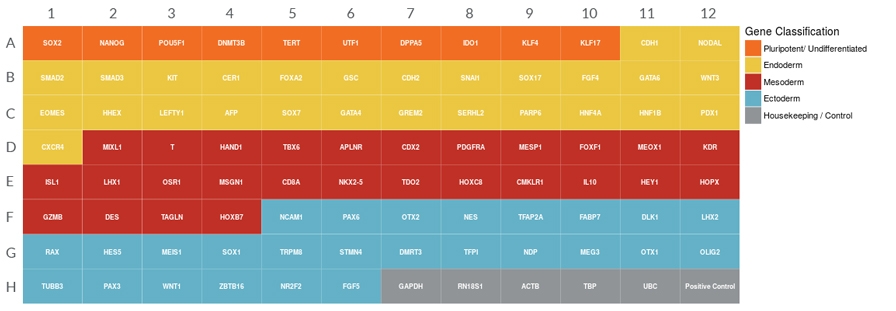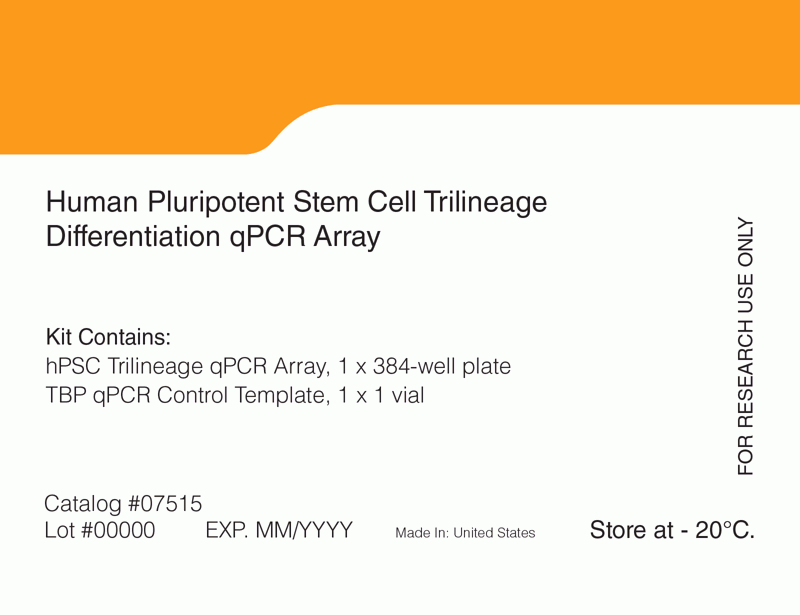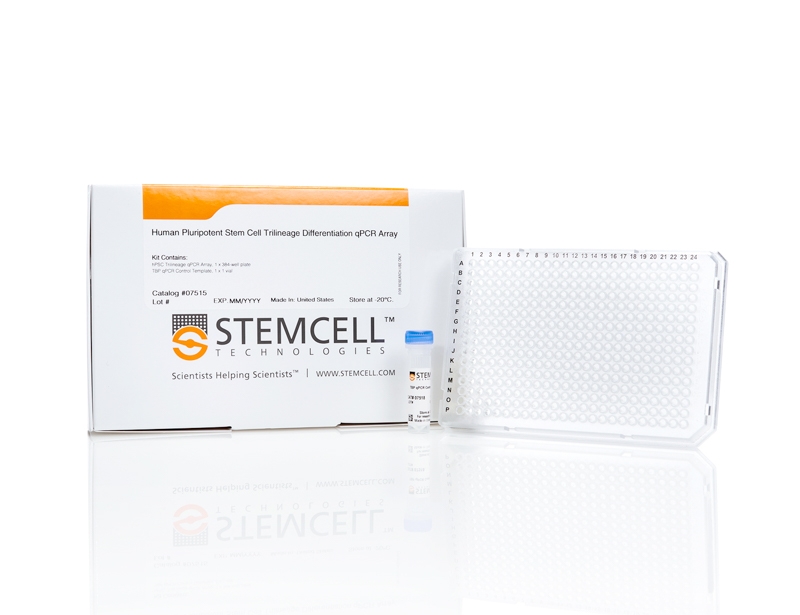概要
The Human Pluripotent Stem Cell (hPSC) Trilineage Differentiation Quantitative Polymerase Chain Reaction (qPCR) Array is designed for characterization of hPSCs and their trilineage differentiation capacity. hPSCs, including embryonic stem (ES) and induced pluripotent stem (iPS) cells, are self-renewing and have the ability to differentiate into cells of the three embryonic germ layers: ectoderm, mesoderm, and endoderm. This qPCR array provides the gene expression profile of undifferentiated ES and iPS cells and their trilineage derivatives following in vitro directed or spontaneous differentiation, thereby validating the ability of a cell line to differentiate to the three germ layers. Genes were selected based on their demonstrated differential expression in ES and iPS cells compared with hPSC-derived ectodermal, mesodermal, and endodermal lineage cells (Adewumi et al.; Bock et al.).
qPCR is used to determine changes in steady-state mRNA levels of gene expression across multiple samples, generally normalized to the relative expression of internal control genes. Gene-specific primers amplify target sequences within cDNA pools reverse-transcribed from mRNA and, as with TaqMan® technology, hybridized sequence-specific probes provide a fluorescent signal from the 5' exonuclease activity of Taq DNA polymerase. The accumulation rate of the fluorescent signal is used to quantify the sample cDNA, and thereby the amount of mRNA in the original cell lysate.
This qPCR array contains validated primers and probes for detection of 90 genes whose expression is correlated with undifferentiated hPSCs or their derivatives undergoing the early stages of differentiation, as well as six endogenous (housekeeping) control genes. TBP (TATA box-binding protein) qPCR Control Template is provided as a synthetic DNA positive control. Additional gene information and a qPCR analysis tool are available at www.stemcell.com/qPCRanalysis
qPCR is used to determine changes in steady-state mRNA levels of gene expression across multiple samples, generally normalized to the relative expression of internal control genes. Gene-specific primers amplify target sequences within cDNA pools reverse-transcribed from mRNA and, as with TaqMan® technology, hybridized sequence-specific probes provide a fluorescent signal from the 5' exonuclease activity of Taq DNA polymerase. The accumulation rate of the fluorescent signal is used to quantify the sample cDNA, and thereby the amount of mRNA in the original cell lysate.
This qPCR array contains validated primers and probes for detection of 90 genes whose expression is correlated with undifferentiated hPSCs or their derivatives undergoing the early stages of differentiation, as well as six endogenous (housekeeping) control genes. TBP (TATA box-binding protein) qPCR Control Template is provided as a synthetic DNA positive control. Additional gene information and a qPCR analysis tool are available at www.stemcell.com/qPCRanalysis
技术资料
| Document Type | 产品名称 | Catalog # | Lot # | 语言 |
|---|---|---|---|---|
| Product Information Sheet | Human Pluripotent Stem Cell Trilineage Differentiation qPCR Array | 07515 | All | English |
| Safety Data Sheet | Human Pluripotent Stem Cell Trilineage Differentiation qPCR Array | 07515 | All | English |
数据及文献
Data

Figure 1. Human Pluripotent Stem Cell Trilineage Differentiation qPCR Array Plate Configuration

 网站首页
网站首页



